- JAPANESE
- LANGUAGE
X
 THAT IS GOOD
THAT IS GOOD
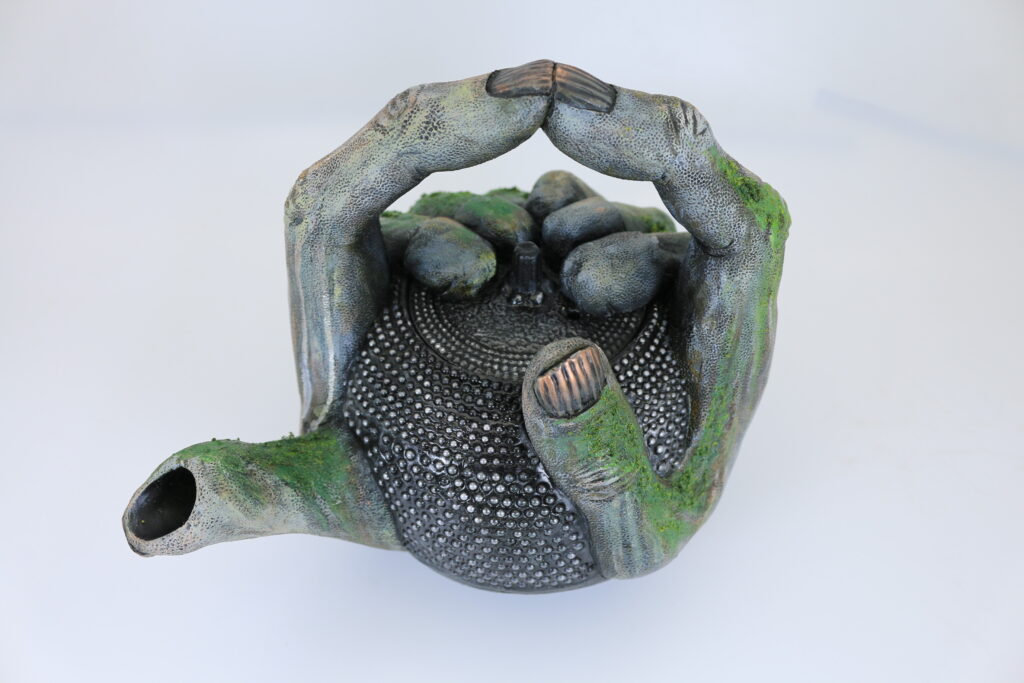
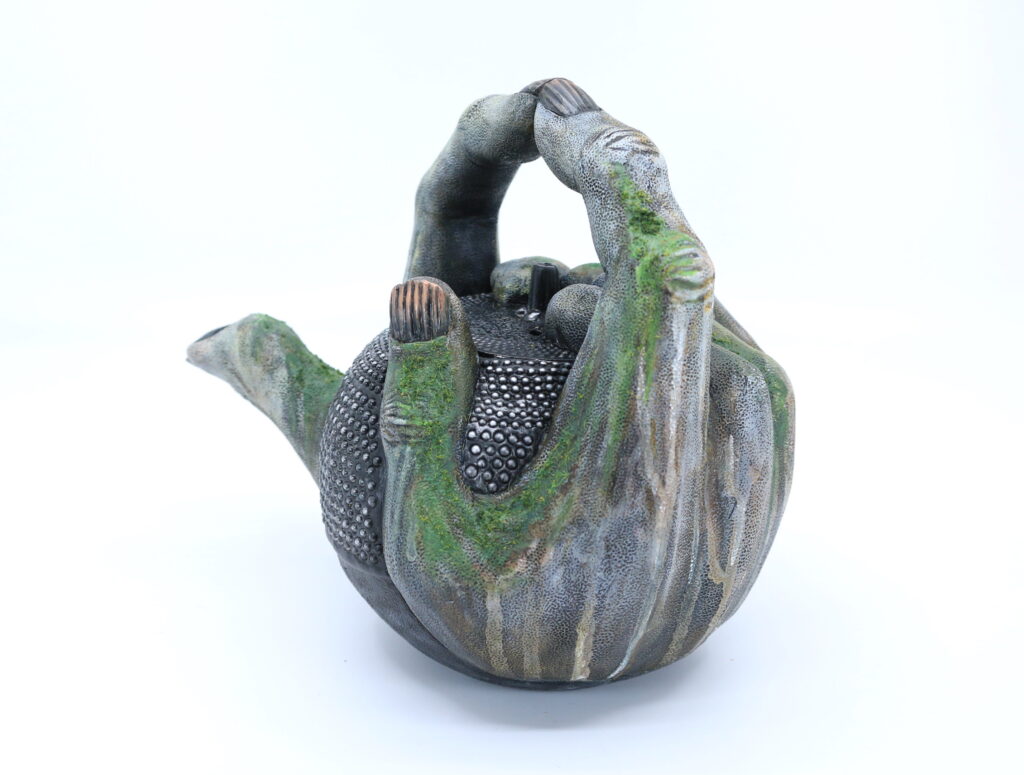
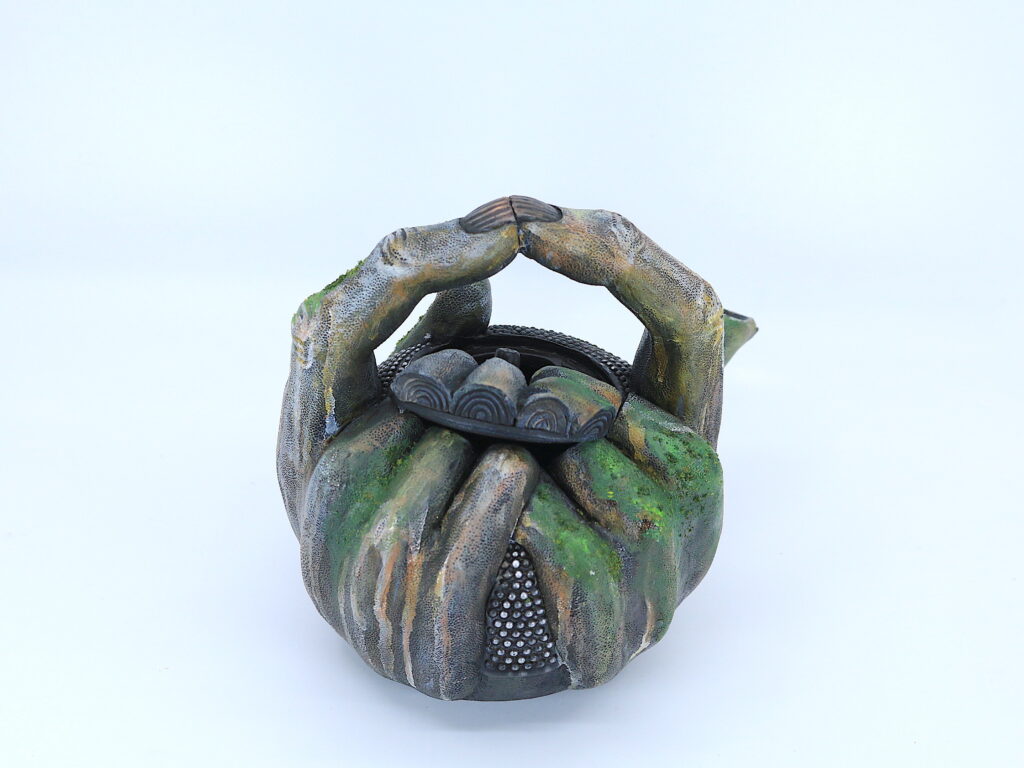
Legal amount: height x width x length = 170 x 190 x 144 (mm)
Materials: Epoxy putty, sculpey, iron ball, ball chain
When I appeared in the local hero of Iwate Prefecture, “Ganrizer NEO,” I was very surprised to learn that the name “Iwate” literally comes from the word “rock hand.
Also, since I was playing a Nanbu ironware craftsman, I thought “I want to make a Nanbu Tetsubin someday” when I was filming in several workshops.
*Nanbu Tetsubin : A cast iron kettle made with the skill of Nanbu tekki (ironware)
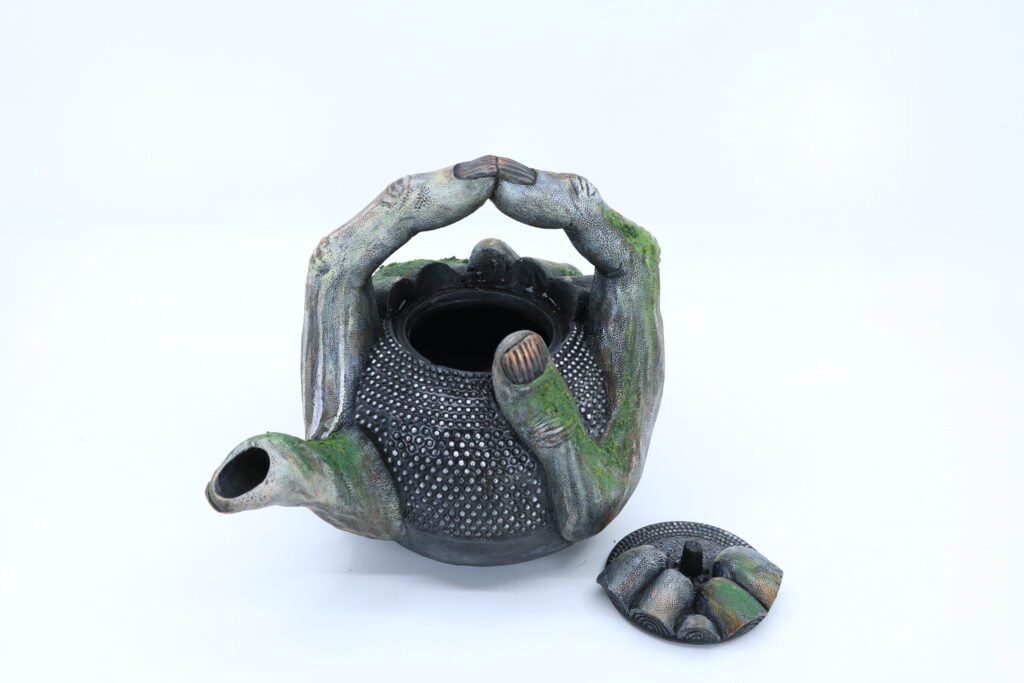
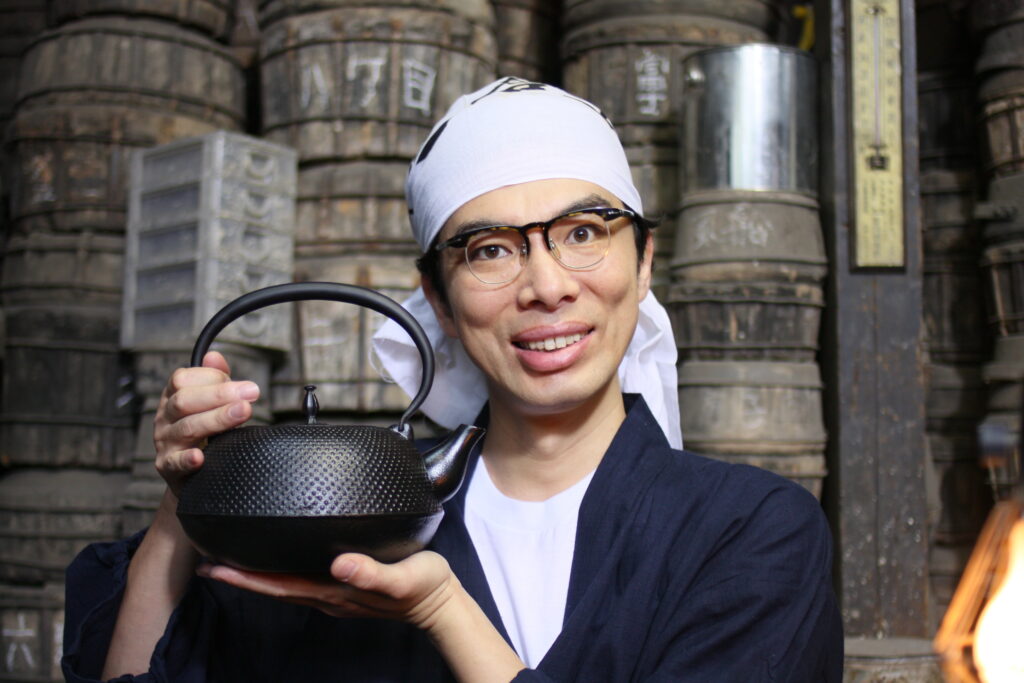
So this time, I decided to keep it simple and make a tetsubin with a rock hand. I was relieved when the idea came to me, but then I thought, “There’s something about ‘hand’ and ‘kettle’…”. Oh! Shadowgraph! I remembered the shadowgraph of a kettle.
I thought, “That’s it!” However, it was difficult to make a “kettle of shadowgraph” into a “three-dimensional kettle.
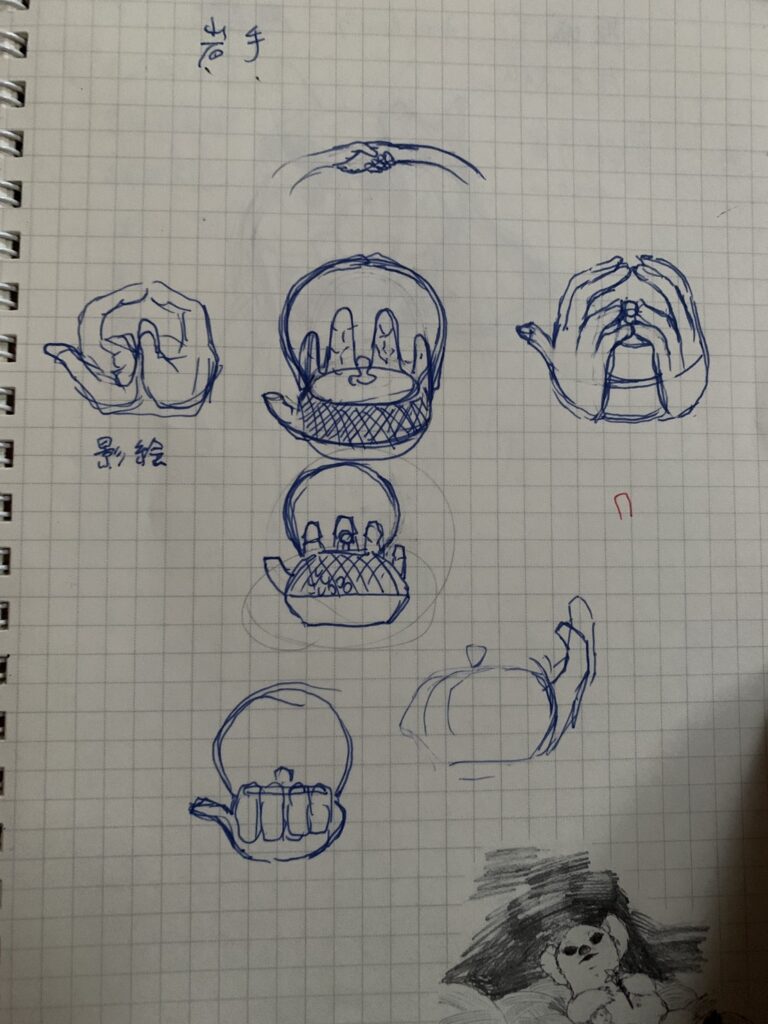
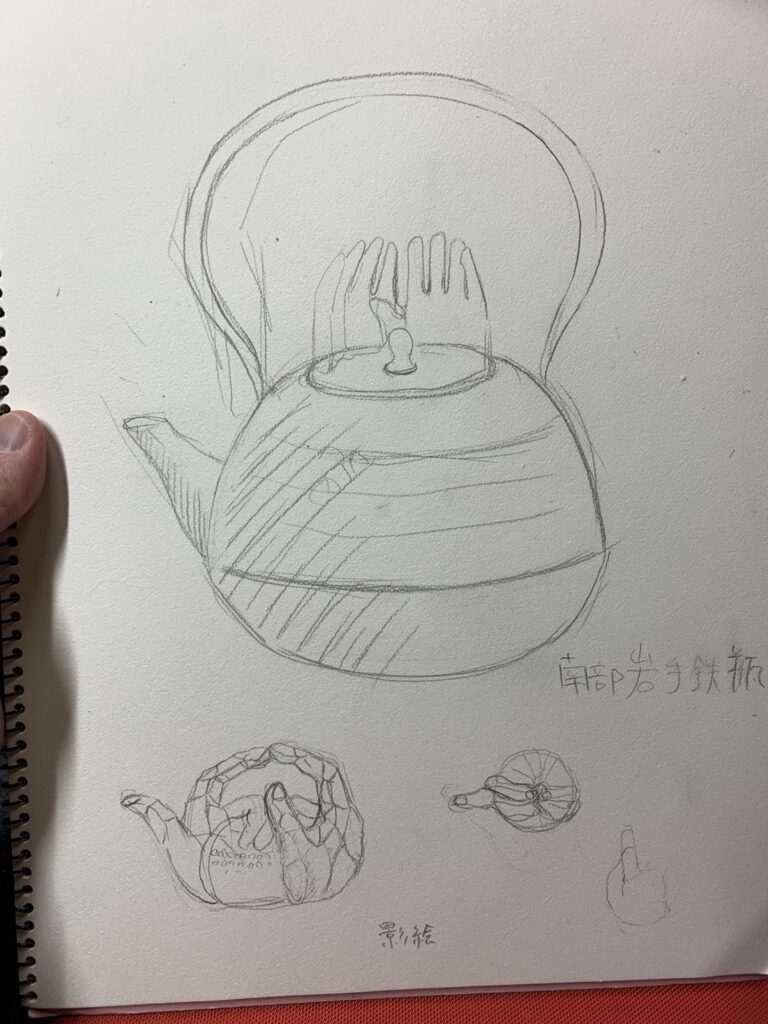
For the time being, I used a plastic bottle as a core and put putty on it, and for the lid, I put a Nanbu tetsubin teapot lid that I had at home. Then, I decided to sculpt the fingers one by one.I could easily decide that the index finger would be the “handle” and the left thumb would be the “spout,” but in the shadowgraph, the right thumb would be the “handle of the lid,” and there was no way to connect the lines. In addition, the middle finger and the baby finger are on the opposite side of the screen, so no matter how I tried, there were not enough fingers. So I changed the rule to “it looks like a kettle when you make a shadowgraph”. I pressed the skin of a stingray onto the clay to give it the texture of a rock. This is the opposite of the previous work, Iwaki saurus katagiri. On the parts where there are no fingers, I added a pattern called ” Maru Arare,” which is unique to Nambu tetsubin. Originally, Maru Arare was expressed by pressing a round bar into a mold, but since the convexity was reversed, I used an iron ball and a ball chain.
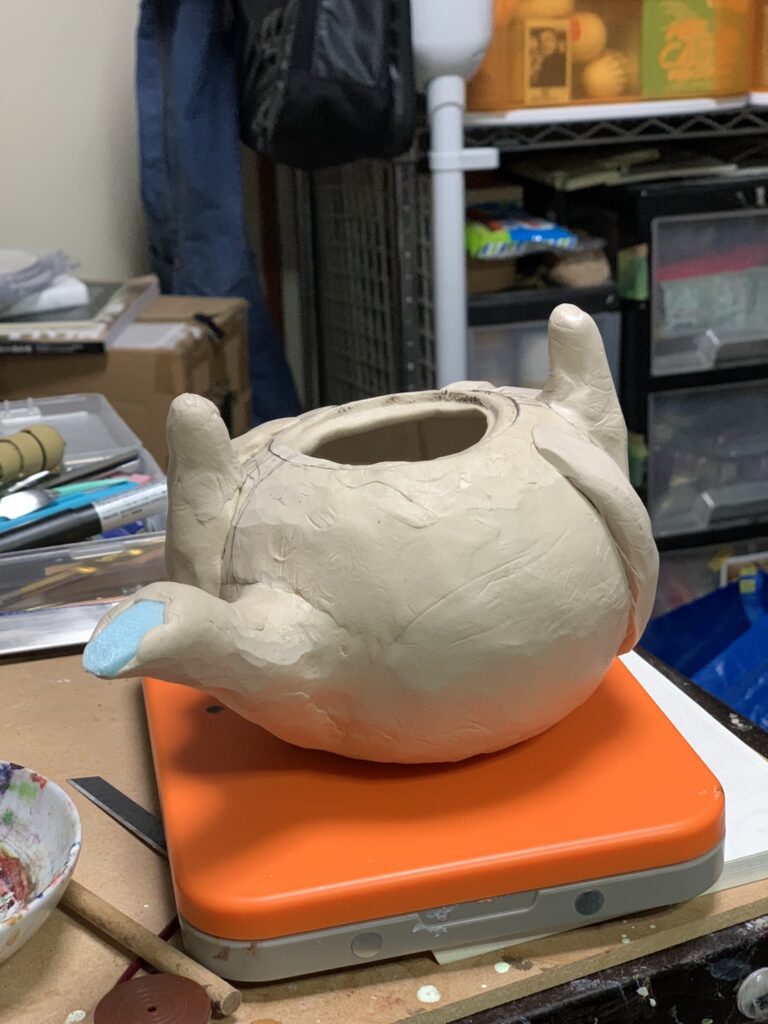
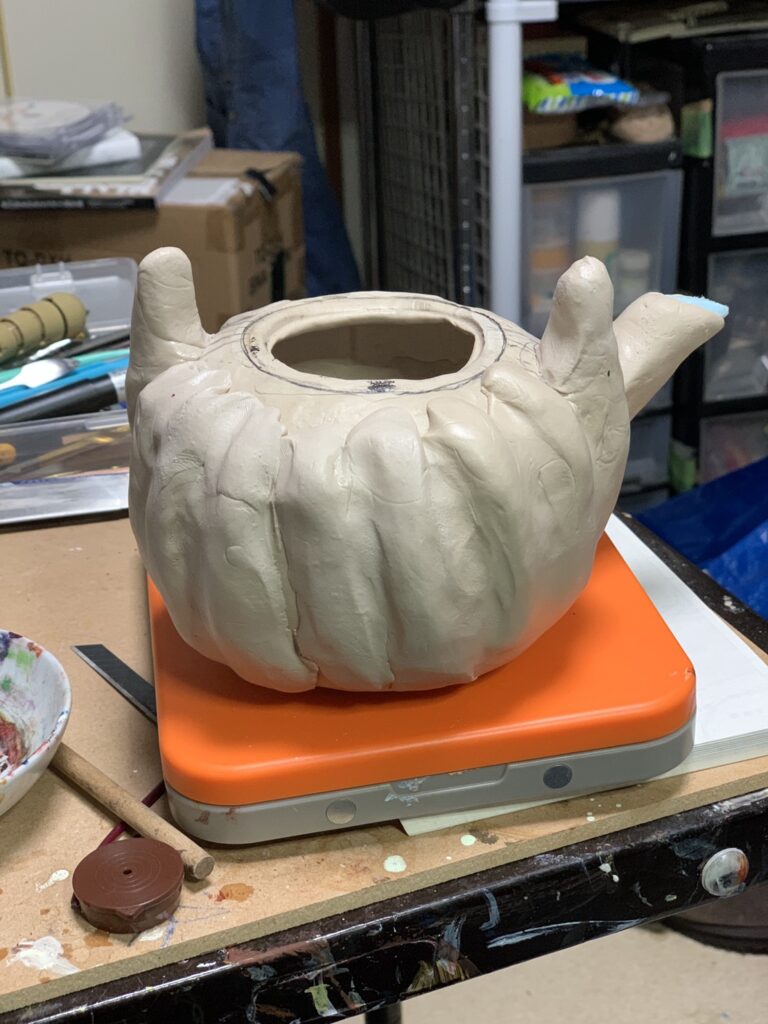
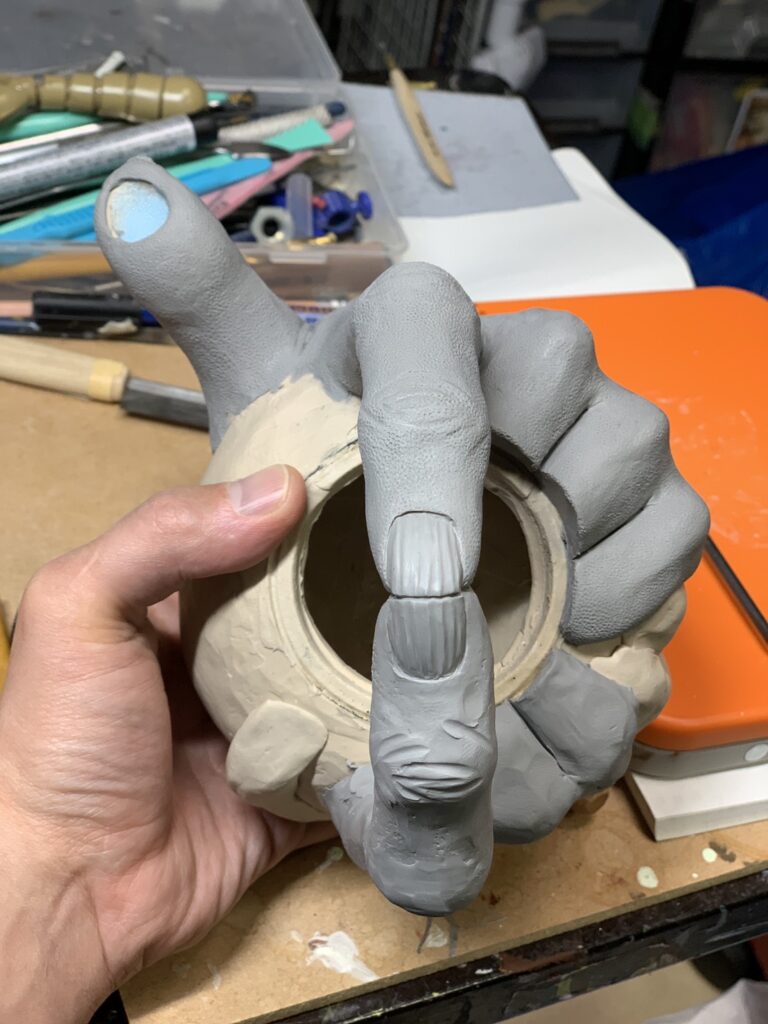
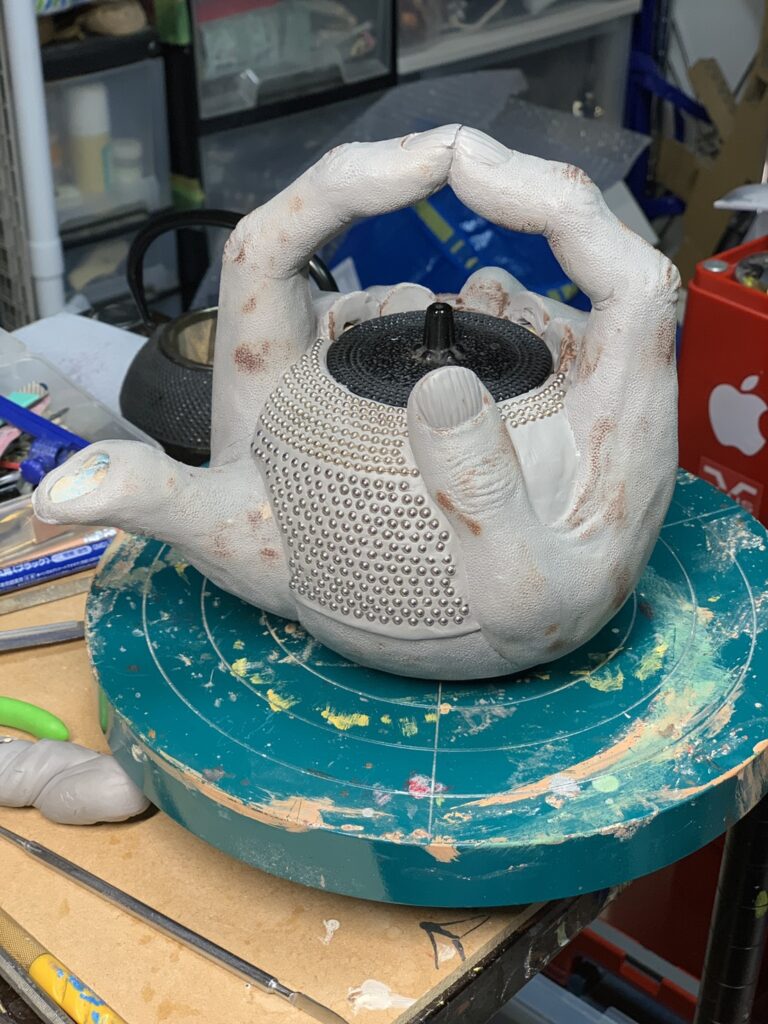
And the fun coloring…. This was another difficult task. First of all, what kind of color is “rock”? At first, I thought I should use gray as a base color and stain it. But when I searched for the word “rock,” I found rocks in various colors, with marks from dripping rain, patterns on the rocks that looked like wood grain, cracks, moss, and thick ropes tied around them. It’s hard to get it “beautifully dirty”. But it was fun.
And we have an extra tetsubin without a lid….
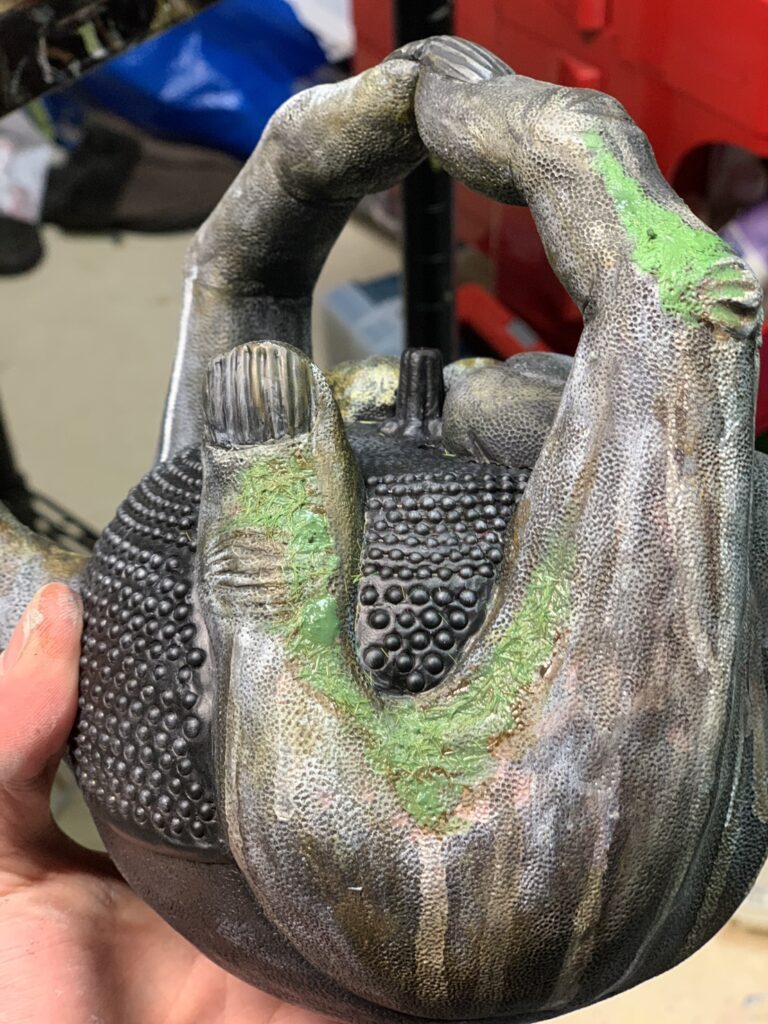
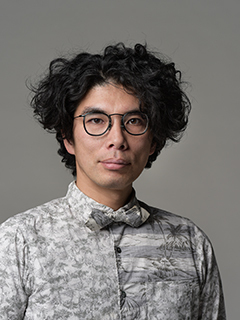
Jin Katagiri
Born November 27, 1973 / Born in Saitama Prefecture / Graduated from Tama Art University
Active in the stage, movies, radio, etc., mainly in TV dramas series. Major appearances in recent years include “99.9% -Criminal Lawyer-” (TBS), “Your Turn to Kill” (NTV), and “NHK Morning drama series Yell” (NHK).
In addition to acting, he also creates clay, and from 2016 to 2018 he held a national tour at the “Jin Katagiri Absurdity Clay Art Exhibit Giri Ten.” In 2019, he is holding his first overseas solo exhibition in Taiwan.
Iwate Prefecture is located in the coastal area of the Tohoku region.Iwate Prefecture is located in the coastal area of the Tohoku region. Except for the Kitakami Basin, which is long and narrow and stretches about 120 km from north to south, and the coastal areas, the prefecture is rich in greenery with many mountains and hills.It is also a popular spot for tourists to enjoy nature and two World Cultural Heritage sites. One of them is in the southern town of Hiraizumi, where Chūson-ji,Mōtsū-ji,Kanjizaiōin Ato, Muryōkōin Ato and Mt. Mt. Kinkeisan are registered as World Heritage sites called “Hiraizumi – Temples, Gardens and Archaeological Sites Representing the Buddhist Pure Land -”
Hashino Iron Mining and Smelting Site in Kamaishi City in the southeast part of the city, which is the site of Japan’s oldest Western-style blast furnace, is also registered as a UNESCO World Heritage Site for being a component site of “Sites of Japan’s Meiji Industrial Revolution: Iron and Steel, Shipbuilding and Coal Mining.”
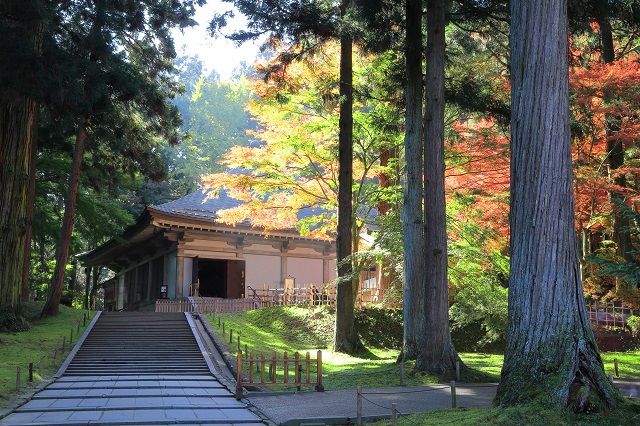
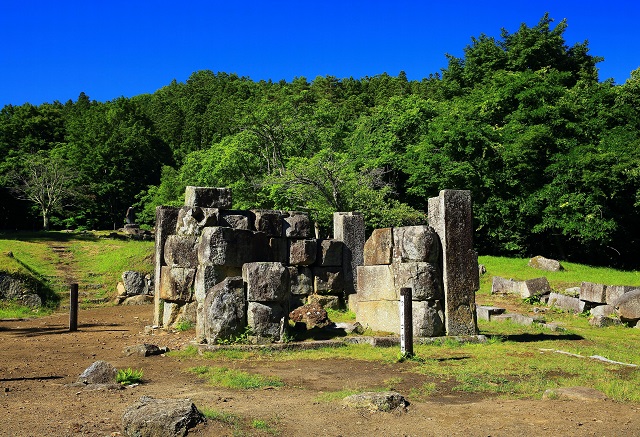
There are many theories about the origin of the name “Iwate,” but I would like to share with you a story about the origin of the “rock hand.
A long time ago, a stone that is believed to have flown down from Mt. Iwate when it erupted was called “Mitsuishi-sama” and was worshipped by people. At that time, a demon called “Rasetsuki” was misbehaving with villagers and travelers in the area. The villagers were troubled and asked Mitsuishi-sama to “please stop the evil demon”. The God of Mitsuishi immediately tied the demon to three large stones. The demon was so astonished that he said, “I will never misbehave again. I will never show myself in this village again, so please forgive me.” The God of Mitsuishi said, “If you make a sign that you will never misbehave again.” So the demon stamped his handprint on the stone and fled to the far side of Mt.Nansho.
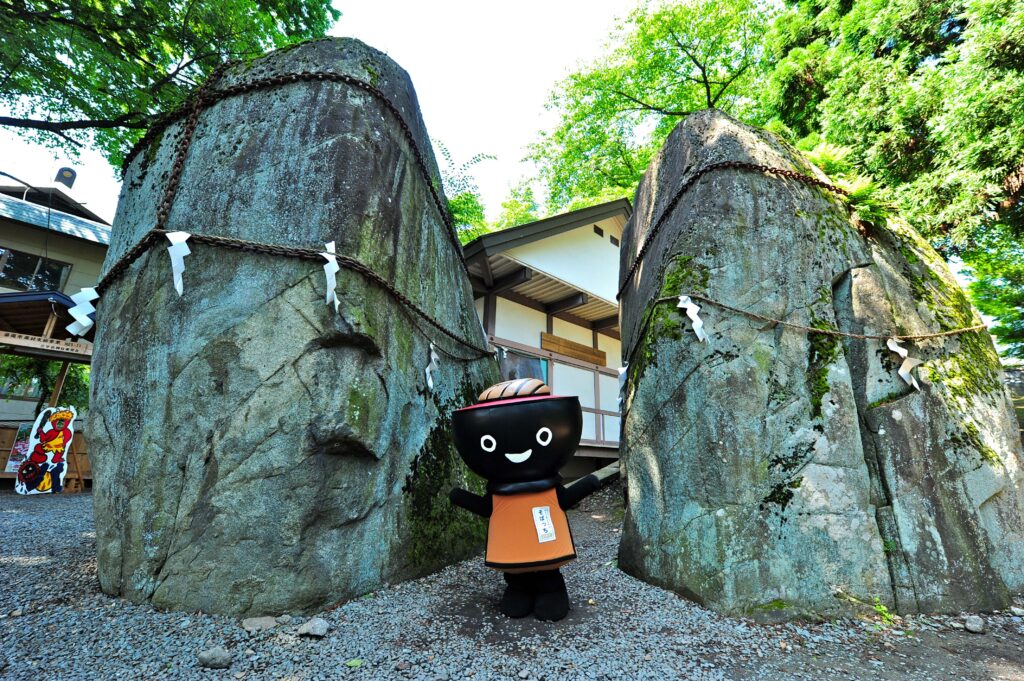
Nambu ironware is one of the representative traditional crafts of Iwate Prefecture. Nambu ironware has been produced in Morioka City and Oshu City since ancient times, but the history of its birth is different.
Morioka’s ironware is said to have originated in the Edo period, when the lord of the Nanbu domain, who ruled the area, invited kettle makers from Kyoto and Koshu (Yamanashi Prefecture) to make tea ceremony kettles. The name “Nanbu” is said to have originated from the Nanbu domain.
On the other hand, Oshu’s ironware has a long history, dating back to the late Heian period (794-1185), when Fujiwara no Kiyohira invited ironware craftsmen from Omi Province to make armor. Since then, it has developed mainly into agricultural machinery and daily necessities castings. It is said that the name “Nambu ironware” came to be used in 1955.
The tetsubin (iron kettle), the motif of this work, is a typical Nambu ironware item. It is said that water boiled in an iron kettle has a mellow taste and is effective in replenishing iron. It is also highly functional, and its modern design is loved as a tool that will last a lifetime. Recently, modernized designs have been released, attracting attention from around the world.
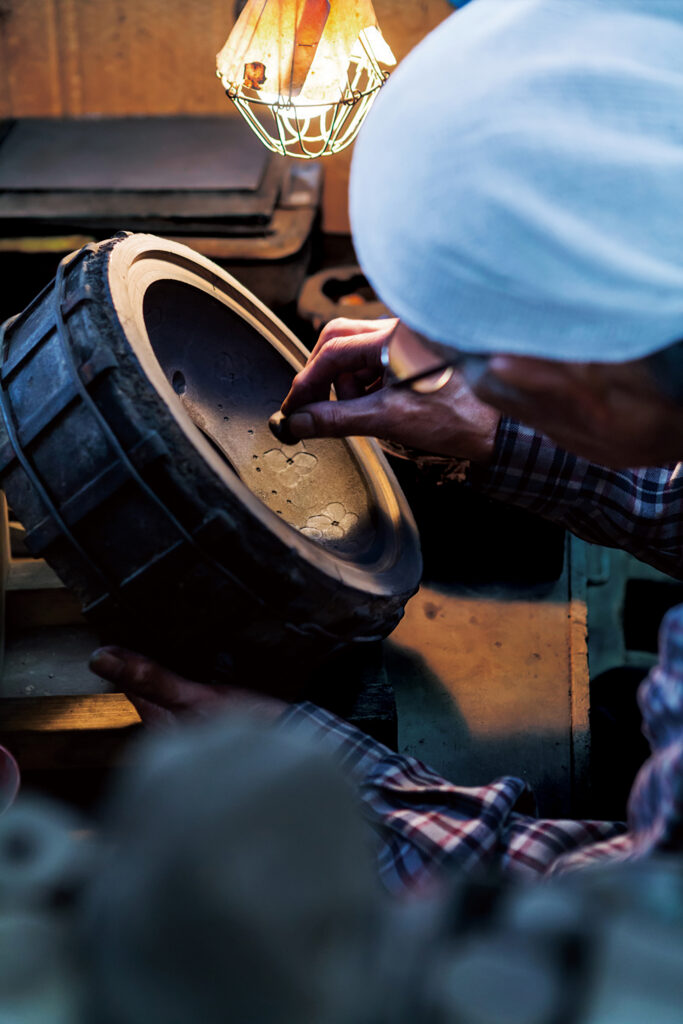
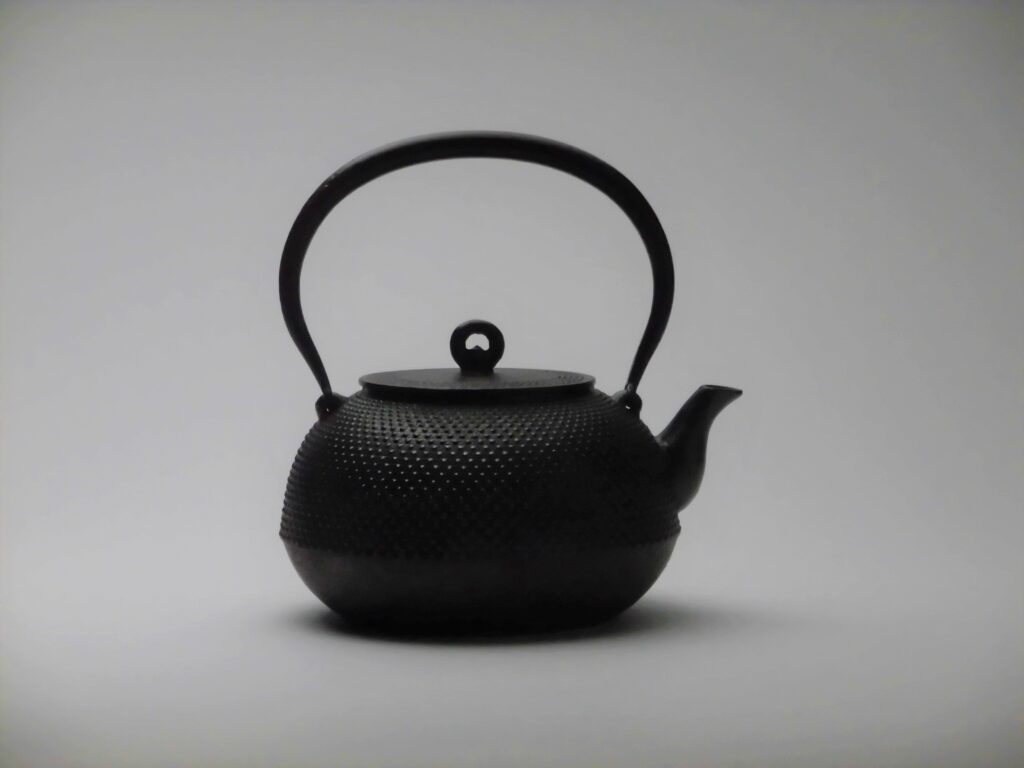
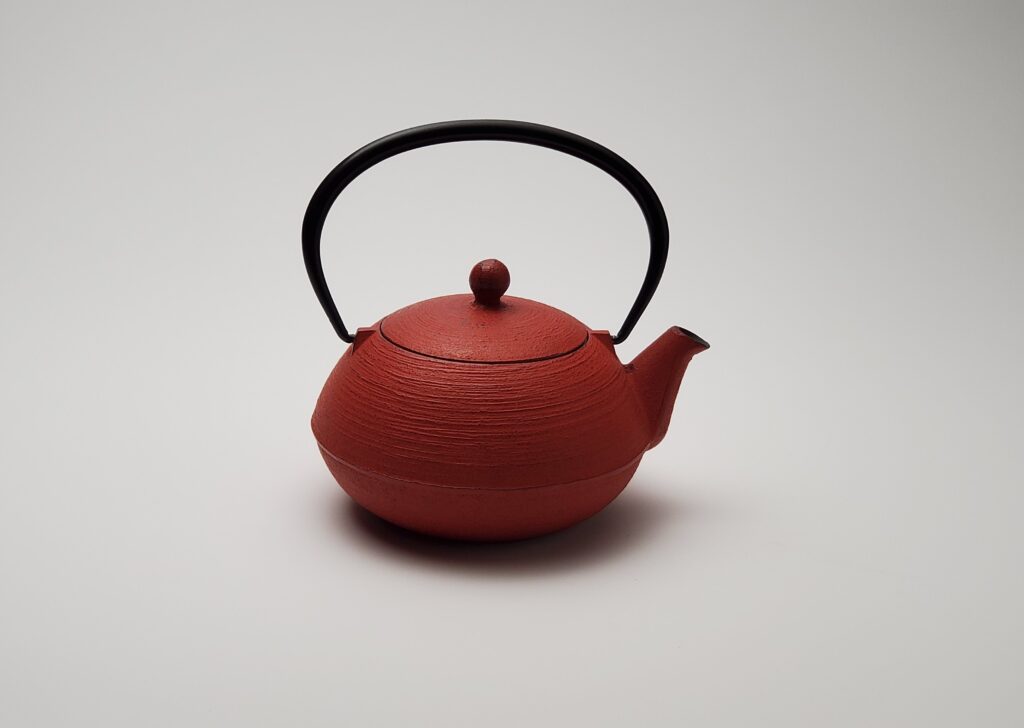
With the slogan “Bring energy and smiles to the children of Iwate!”, Ganrizer was born in October 2011, the year of the Great East Japan Earthquake. He is a local special effects hero from Iwate Prefecture, with Nambu ironware in his right hand and a Nambu iron kettle on his right shoulder.
This year marks the tenth anniversary of the series, and the tenth in the series, “Tetsujin Ganrizer Legend Heroes,” is being aired. Jin Katagiri appeared in the series “Tetsujin Ganrizer NEO” aired in 2014 and 2015.
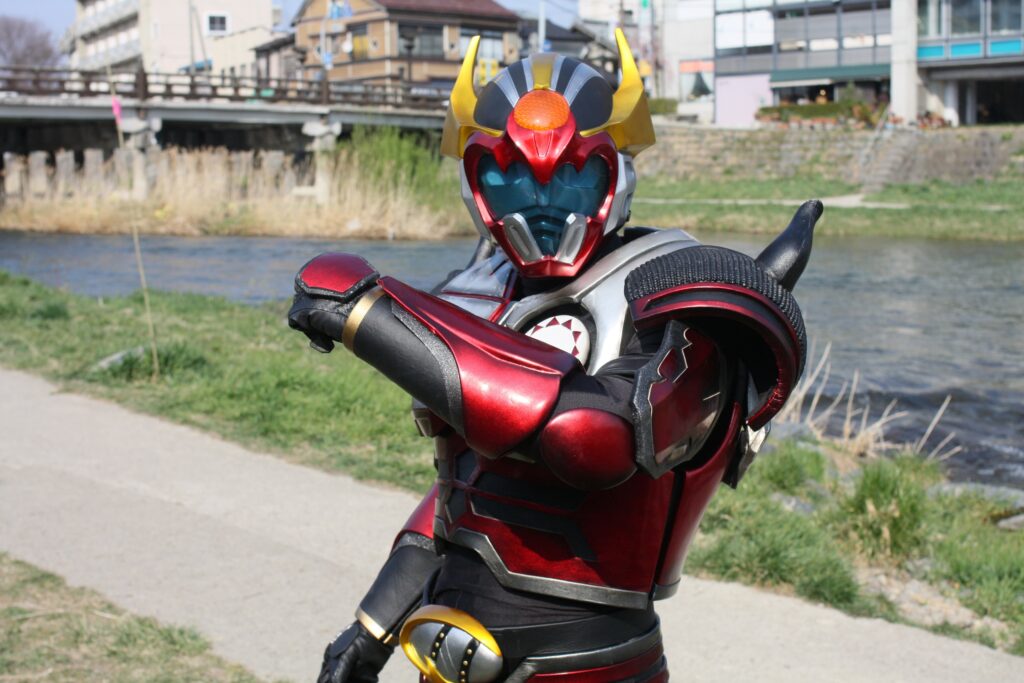

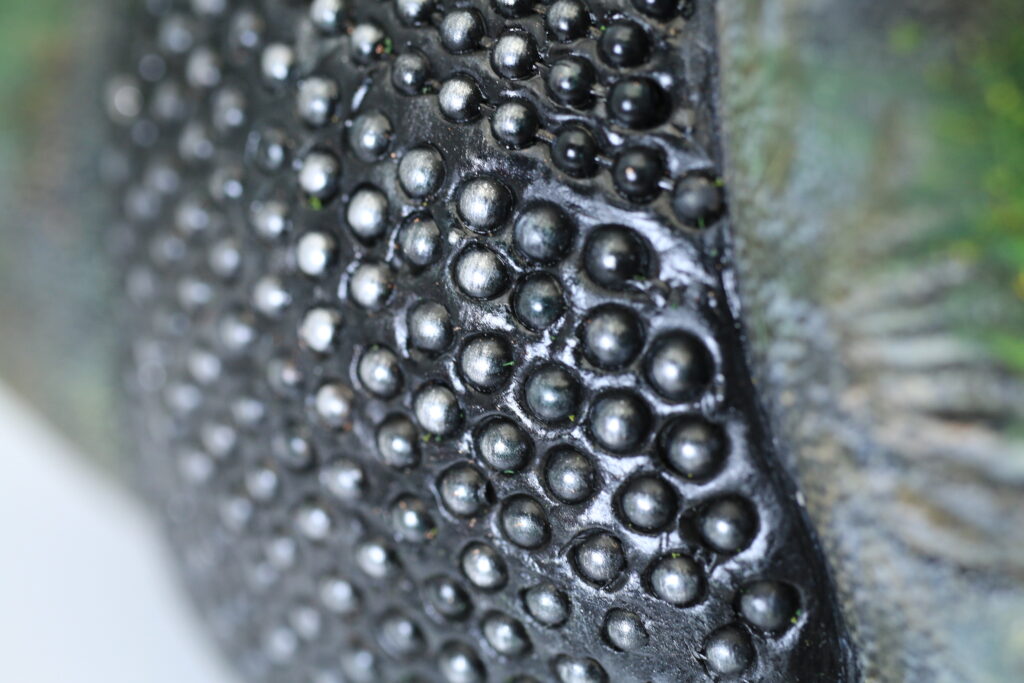
When I saw the dots (arare) on the new piece “Iwate Tetsubin”, I thought it was a real Nambu tetsubin with clay. However, when I read the caption, I was surprised to learn that everything except the lid was handmade by Mr. Katagiri. I think the charm of Ms. Katagiri’s works is the details and colors that can be enjoyed from any angle.
Someday, I would like to hold a world tour of Katagiri’s works and let people see the real thing.
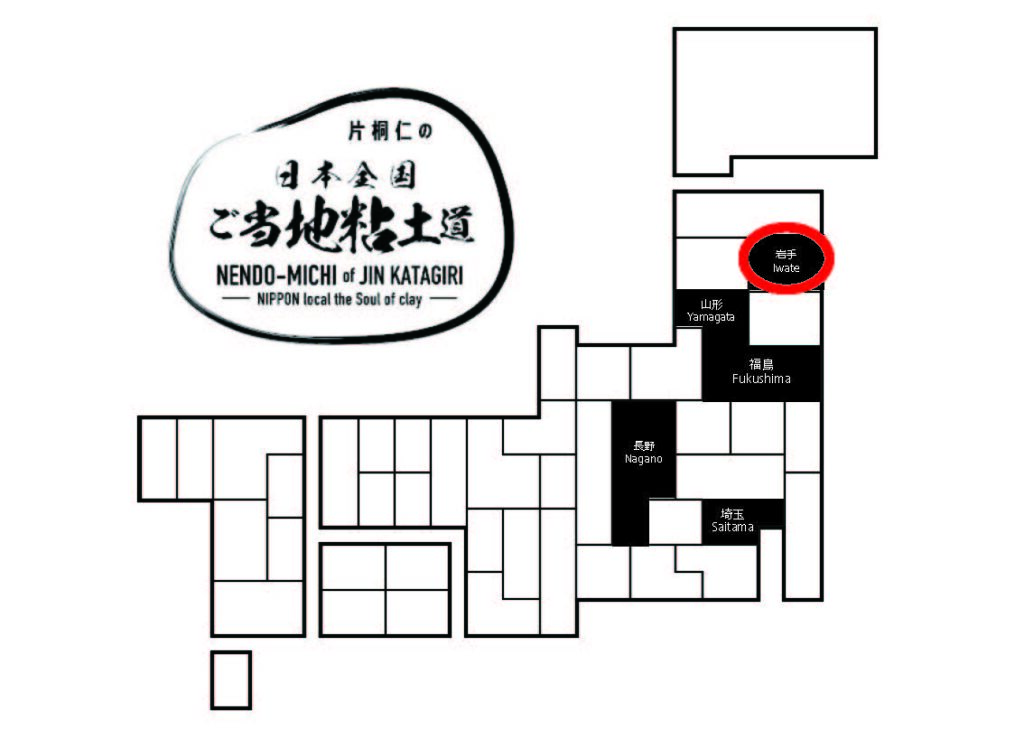
Text : THAT IS GOOD editorial department Fujita